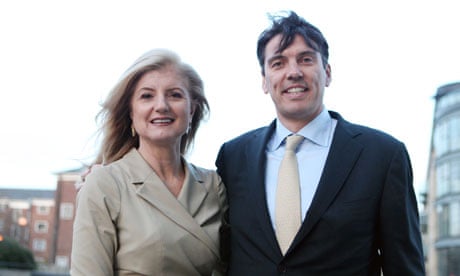For a generation of media folk recast as digital strivers, AOL remains as evocative a brand as Google – except for polar opposite reasons. Google became the harbinger of an industry going up, and AOL of one going down.
In 2000, AOL, then the world's foremost digital company, bought Time Warner and, in short order, ruined that company and helped precipitate the end of the first stage of the digital revolution with an across the board share price wipeout. Out of those ashes, Google would rise.
AOL, however, is still around, occupying a pained and awkward place in the digital world. Last week, its CEO, Tim Armstrong, threw a tantrum that again prompted questions about where AOL might be heading, and about the peculiar nature of its efforts to get there. That is, it has been heading in the wrong direction for so long, why would it continue to think it might ever find the right one?
(In the short memory department, BusinessInsider called Armstrong's tantrum "one of the most bizarre sequences in AOL history". More bizarre than having lost $163bn in value?)
The moment at issue last week had to do with Patch, an effort to create a national local or micro news network, that, surprising to almost no one – except perhaps Armstrong himself – has come to grief. In one of those company-wide retrenchment or downsizing conference calls that are like the cruel ceremonies that accompany the defeat of nations, Armstrong, as he admonished his troops and cast great blame on the waters, was distracted by someone with a camera. In a sudden, whiplash spasm of anger, Armstrong publicly fired the camera wielder, a senior Patch employee, on the spot.
This opened up several windows into the state of AOL. The first let the world see directly into the company's culture: headquarters employees gathered around and sitting on the floor, and a CEO sounding like an angry headmaster.
Digital companies often work with disproportionate numbers of young people, many in their twenties, many credited with much brilliance, and we tend to see them as a lucky group (free food, lax dress codes, etc). But suddenly, in the permanent and viral record of the Armstrong tantrum, it was possible to see the other side of this vaunted status, when the kids are not performing so well: it's an infantilized and demeaning world. These aren't professionals, who, even in extremis, command a certain degree of respect and human-resource ritual; these are children being upbraided and punished.
Then, there is the window into Armstrong himself. He has always been one of those odd figures in the digital world, always straining for and never quite attaining legitimacy. He's not a founder, in a world where that is the sine qua non of leadership and status; nor is he an engineer or developer, with that valuable currency. Armstrong is simply a salesman, an advertising guy – someone apart from digital culture and understanding. A fungible Joe.
Armstrong got his CEO role because nobody else with legitimacy wanted it, and because he hoped, on the basis of pure ego and ambition and desire, that running a public company, even a discredited one, would by some miracle give him that authority stature.
Frst, of course, he has to hold on to his job, an effort of exertion and fire-extinguishing that might not necessarily bring out his best side. Indeed, lashing out at the photographer had the ring of personal embarrassment. He knows what he looks like.
And then, there is Patch. Adding to the discomfort, Armstrong himself founded Patch. Then, worth a raised eyebrow, he got AOL – often a buyer of last resort – to acquire it after he joined the company as CEO. In other words, for all that Armstrong may reprimand his young staff and bawl out a nearby photographer, Patch is all on him.
I don't know anyone (who has ever given Patch a moment's thought) who has regarded it as anything but preposterous. Nor do I know anyone among the myriad people who have cycled through its staff who hasn't been aghast at how dysfunctional it is. And I don't know anyone in the digital business who believes that local news has, at this time or in the foreseeable future, any mathematical way to success as an advertising model. Local news is a low CPM business (that is, ads are bought on a per thousand views basis) and low CPMs demand mass audiences. So, again, what exactly was the thinking here?
And then, there is the window into the raison d'etre of AOL itself, which was opened up once again by Armstrong's public display of temper. Patch is just one more odd lot piece of the mishaps and happenstance and aborted strategies and nutty legacy that have left AOL with the wherewithal to continue but not to get any place.
It is no longer a technology company or, in any significant sense, part of the digital world. AOL is, the company sometime maintains, an ad-driven digital media company – in a world where no such thing has ever proven to be successful.
Its one foot forward has been the acquisition of the Huffington Post, which, while hardly a financial advance, nevertheless made AOL one of the more important news outlets in America. Unfortunately for Armstrong, almost since AOL's acquisition, Huffington Post founder and namesake Arianna Huffington has rather openly been planning for its exit, with Huffington and Armstrong operating as parallel entities within AOL.
So, now, what happens to AOL?
That's one of those peculiar existential questions that could have been asked about the company at any point since 2000. It exists, practically speaking, by no one's design or intentions. It goes on because it exists, but without any real hope that it will ever exactly justify its existence.
It is led by people who, no doubt, would prefer to be leading something else. The same goes for most of the people who work there; they do so only by default.
AOL is a historical mistake. It's only surprising that more people don't lose their cool there.

